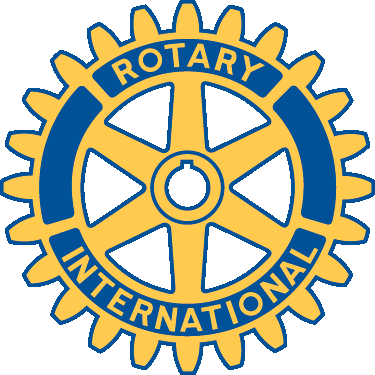Note: The following article was printed in the 1939
"Semi-Centennial Anniversary" issue of the Bluefield Daily
Telegraph. This issue of the paper was published to celebrate
Bluefield's 50th year. An original copy of the paper was supplied to The
Dinner Horn by Rotarian Robert Buzzo of the First Community Bank.
This article is not a complete history of our club, but it is a great beginning for those who want to produce a fairly comprehensive picture of the club's past activities. We are all indebted to Robert Buzzo.
ROTARIANS ACTIVE
Many Worthy Causes Fostered By Civic Club
Many notable achievements are
proudly and justifiably claimed by the Rotary Club of Bluefield. Through its
members Rotary fosters and takes part in numerous worthy causes, many of
which are international in scope.
The local club was organized April 13, 1918, being the first of the
luncheon and service clubs of Bluefield. It was on June 1, 1918, a committee
from the Huntington, W. Va., club presented the local group charter No. 393
of the International Association of Rotary Clubs, now Rotary International.
At present the international has 5,000 clubs with an approximate membership
of 210,000.
Rotary has been particularly instrumental locally in promoting welfare work among underprivileged boys, aid to crippled children, establishing Bluefield college, building the West Virginian hotel, instituting the present city manager form of government, establishing the community Christmas tree and other accomplishments, including a recently created student fund.
Charter Members of Club
The eighteen charter members of the
Bluefield club were C. L. Borden, Isadore Cohen, E. H. Easley, D. E. French,
C. H. Goodykoontz, R. W. Lacy, E. A. Leonard, Jr., H. A. Lilly, Myron Marsh,
Rev. H. S. Mabie, Herbert Markle, G. F. Phillips, R. B. Parrish, T. J.
Phelps, H. I. Shott, J. G. Stone, J. T. Thornton, and F. W. Udy.
Objects of the club are “To encourage and foster the ideal of service as a basis of worthy enterprise and in particular, to encourage and foster:
“1. The development of acquaintance as an opportunity for service;
“2. High ethical standards in business and professions; the recognition of the worthiness of all useful occupations; and the dignifying by each Rotarian of his occupation as an opportunity to serve society;
“3. The application of the ideal of service by every Rotarian to his personal, business and community life;
“4. The advancement of international understanding, good will, and peace through a world fellowship of business and professional men united in the ideal of service.”
Slogan Of Rotarians
Slogan, of Rotary “Service above self — He profits most who serves best.”
The club’s ideal is — “An attitude of mind that inspires action, with thoughtfulness of others as its basis and helpfulness to others as its expression.”
Membership is limited to one active and one associate active member from each business or profession thus creating a cross section of the business and professional life of the community. Luncheon meetings are held at 12:15 o’clock each Tuesday. First luncheons were served by the Commercial hotel, followed in order by the Matz hotel, the Women’s Auxiliary and Women’s Guild of Christ Episcopal church and since 1923 by the West Virginian hotel.
Past Presidents Of Group
Past presidents in order are: R. B. Parrish, George Dunglinson, Jr., C. B. Hancock, M. P. Shawkey, C. I. Cheyney, T. S. Hamilton, D. E. French, Jess Lewis, Bernard McClaugherty, H. I. Shott, E. C. Wade, A. H. Hoge, J. W. Hobson, C. V. Foland, J. B. Moseley, Ray Evans, J. H. Hoge, T. H. Clagett, F. S. Easley, E. G. Otey and C. E. Lilly.
Present officers are: George Richardson, Jr., president: Claud Boughner, vice president: C. E. Lilly, past president: B. A. Becraft, secretary: B. C. Stone, treasurer: Joseph Bowen, director: Dan Easley, director: T. H. Clagett, historian: Ray S. Graham and C. H. Shepherd, sergeants-at-arms, and Spencer Armistead, program.
